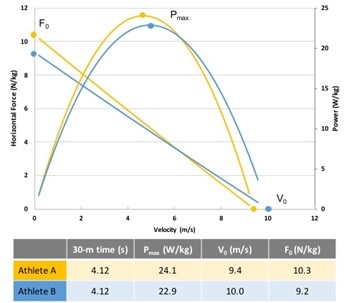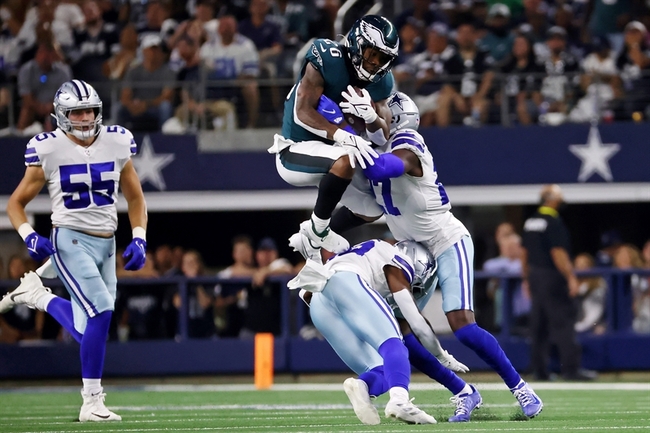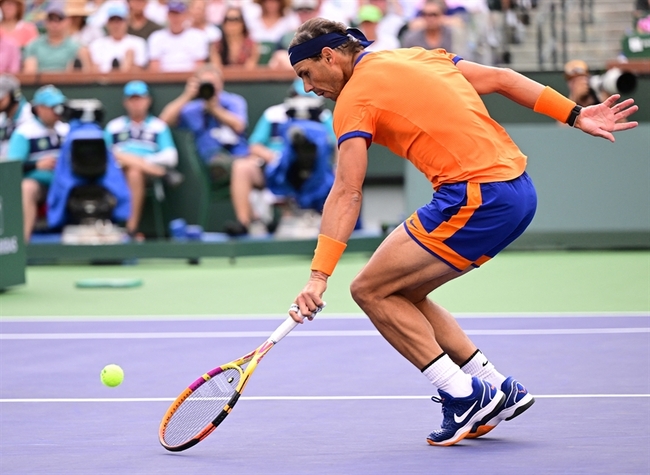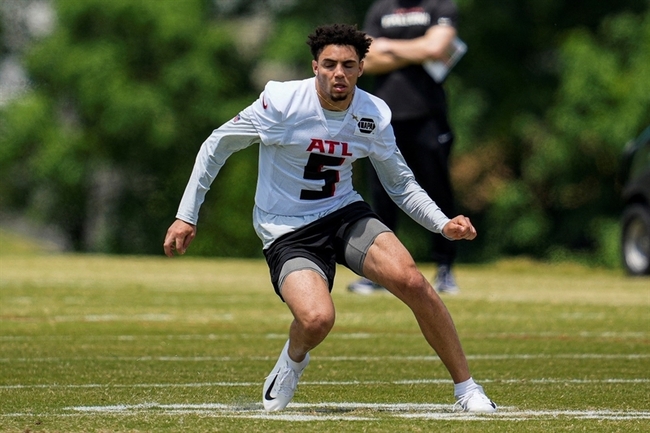You are viewing 1 of your 1 free articles
Demands of Sport: Part IV - Chasing rehabilitation goals: performance foundations
Acceleration is the foundation of sports performance - the quicker, the better. However, injury severely impacts acceleration, and its restoration is essential to ensuring optimal performance. Helen Bayne discusses how practitioners can optimize rehabilitation to include acceleration as a critical component to athlete rehabilitation.

The ability to rapidly increase running speed is a critical component of athletic performance. In addition, many sports require acceleration, whether from the starting blocks in a track and field event or from an upright position during a non-stationary start, such as in field sports. Practitioners commonly assess an athlete’s acceleration ability using a forward linear acceleration test over a specified distance (e.g., a 30-m sprint test). Although multidirectional acceleration is also relevant for sports performance, analysis of linear acceleration provides the fundamental understanding of its mechanical underpinnings.
Effective acceleration requires an athlete to produce a large external force applied in the appropriate direction, coordinated movement patterns, and powerful actions of the lower limb joints. Therefore, understanding the mechanical determinants and the role of the muscles primarily responsible for acceleration performance is important for practitioners to assess, prepare, and rehabilitate athletes.
Mechanical determinants
Acceleration is the rate of change in velocity. According to Newton’s Second Law, acceleration is directly proportional to and occurs in the same direction as the net force applied to an object. Conversely, acceleration is inversely proportional to the object’s mass. The force in question is the ground reaction force (GRF). As the athlete applies force against the ground during the stance phase of each step, an equal force in the opposite direction (by Newton’s Third Law) acts on the athlete’s center of mass. So, athletes with larger mass require greater forces to achieve the same acceleration as lighter athletes.
The ground reaction force is a vector that acts at a certain angle, and practitioners typically resolve the vector into the horizontal (GRFH) and vertical (GRFv) components for analysis (see figure 1). The vertical component is vital to support the body against gravity, allow the necessary flight phase to occur, and gradually raise the center of mass (e.g., a sprinter starting from the blocks). However, because the net horizontal (propulsive) force determines acceleration forwards, much of the research in this area has focused on the horizontal component. Furthermore, there is a strong relationship between the horizontal force component and acceleration performance, while the relationship between total force and performance is relatively weak(1).
NEWTON’S LAWS
| Law #1 | A body at rest will remain at rest, and a body in motion will remain in motion unless acted upon by an external force |
| Law #2 | The force acting on an object is equal to the mass of that object times its acceleration, F=ma. |
| Law #3 | For every action, there is an equal and opposite reaction |
During maximum effort sprint acceleration, there is a predominantly linear relationship between GRFH and velocity (see figure 2). Practitioners measure and extrapolate values along the linear profile to find the theoretical maximum horizontal force (F0) at the y-intercept and the theoretical maximum velocity (V0) at the x-intercept(2). The ability to produce horizontal force at high velocity enables the athlete to accelerate for longer, ultimately reaching a higher top speed. Therefore, a high V0 is a feature of elite 100-m sprint performance(1). Accelerating in a few steps is key for performance in shorter sprints, such as field sports. Therefore, F0 corresponds to the horizontal force produced during the initial push-off and is associated with improved 30m sprint times in rugby players(3). Maximum horizontal power output (Pmax), a measure associated with sprint performance, may also be derived from the F-v data(1).
Figure 1: Ground reaction force

Acceleration profiling
Rather than only measuring the performance outcome (e.g., 30-m time), F-v profiling provides the practitioner with information about why each athlete achieves a given performance which may differ significantly between individuals even if they have very similar 30-m times (see figure 2)(4,5).
Direct measurement of GRF during sprint acceleration requires sophisticated equipment – a customized instrumented treadmill or a series of in-ground force plates. However, simple validated field-based measures allow practitioners to determine F-v profiles of their athletes using high-speed video, timing gates, laser, or radar(2). Practitioners can use these tools to capture displacement-time or velocity-time data, then calculate acceleration and force.
Figure 2: Force-velocity (F-v) profile

The two athletes achieved the same outcome in the 30-m sprint test, with different Pmax and F-v profiles. Athlete A produced greater Pmax and a “steeper” F-v slope than Athlete B, with higher F0 and lower V0. Athlete A may benefit from training to improve force production at high velocities, whereas Athlete B should emphasize the development of force production at low velocities.
Musculoskeletal drivers of acceleration
The mechanical determinants of acceleration described above all relate to external force production capabilities that affect the overall motion of the athlete’s center of mass. This occurs due to the actions of the neuromuscular system – muscle contraction generates internal forces that produce joint torques, ultimately transmitting these forces to the ground during contact. The mechanical work done at the three major lower limb joints during maximum effort sprint acceleration is greatest at the ankle, followed by the hip and then the knee(6).
As the final part of the body that transmits internally generated forces to the ground, the foot and ankle complex is a vital component of this system. Researchers at the University of Melbourne, Australia, demonstrated that the soleus and gastrocnemius muscles are significant contributors to supporting the body (contributing to vertical GRF) and forwards propulsion during sprint acceleration(7). Therefore, practitioners should prioritize plantarflexion strength in athletes where acceleration is a key performance factor, working across the velocity spectrum from calf raise-type exercises with external loads to rebound jumps involving short contact times.
The hamstrings are also substantial contributors to the forwards propulsive forces required for acceleration due to their function at the hip(7). This may explain why athletes exhibit a diminished F0 after sustaining a hamstring injury(8). Furthermore, an international team of researchers demonstrated that low horizontal force production is a potential risk factor for hamstring strain while monitoring regular F-v profiles in football players throughout the season(9). Therefore, F-v profiling may be a valuable tool to monitor athletes for acceleration performance, injury risk reduction, and return to sport management. Gluteus maximus, although it does not appear to play a major role in propulsion during the stance phase, is very important (along with the hamstrings) and produces high forces late in the swing phase to extend the hip in preparation for the next ground contact. Training of the hip extensors should incorporate open- and closed-chain variations across the full range of motion.
Conclusion
The theoretical basis for acceleration has been thoroughly investigated in experimental studies, providing a strong evidence base for the mechanical underpinnings of acceleration performance. Accessible measurement devices and data processing tools are available to practitioners, enabling the profiling of athletes to quantify the underlying why of a performance outcome. In addition, recent research has improved our understanding of the joint- and muscle-specific roles in producing propulsive force, highlighting the importance of the plantarflexors and hamstrings. Together, this knowledge may be used to individualize training prescription, screen and monitor athletes, and inform return to sport readiness decisions.
References
- Scand J Med Sci Sports. 2015;25(5):583-594
- J Biomech. 2019;(94)20):82-87
- Int J Sports Physiol Perform. 2015;10:695-702
- Int J Sports Physiol Perform. 2016;11(2):267-272
- Scand J Med Sci Sports. 2021
- J Exp Biol. 2019;222(22):jeb209460
- Scand J Med Sci Sports. 2021;31:1882-1896.
- J Sports Sci. 2016;34:535-541
- Int J Environ Res Public Health. 2021;18
Further reading
Newsletter Sign Up
Subscriber Testimonials
Dr. Alexandra Fandetti-Robin, Back & Body Chiropractic
Elspeth Cowell MSCh DpodM SRCh HCPC reg
William Hunter, Nuffield Health
Newsletter Sign Up
Coaches Testimonials
Dr. Alexandra Fandetti-Robin, Back & Body Chiropractic
Elspeth Cowell MSCh DpodM SRCh HCPC reg
William Hunter, Nuffield Health
Be at the leading edge of sports injury management
Our international team of qualified experts (see above) spend hours poring over scores of technical journals and medical papers that even the most interested professionals don't have time to read.
For 17 years, we've helped hard-working physiotherapists and sports professionals like you, overwhelmed by the vast amount of new research, bring science to their treatment. Sports Injury Bulletin is the ideal resource for practitioners too busy to cull through all the monthly journals to find meaningful and applicable studies.
*includes 3 coaching manuals
Get Inspired
All the latest techniques and approaches
Sports Injury Bulletin brings together a worldwide panel of experts – including physiotherapists, doctors, researchers and sports scientists. Together we deliver everything you need to help your clients avoid – or recover as quickly as possible from – injuries.
We strip away the scientific jargon and deliver you easy-to-follow training exercises, nutrition tips, psychological strategies and recovery programmes and exercises in plain English.















